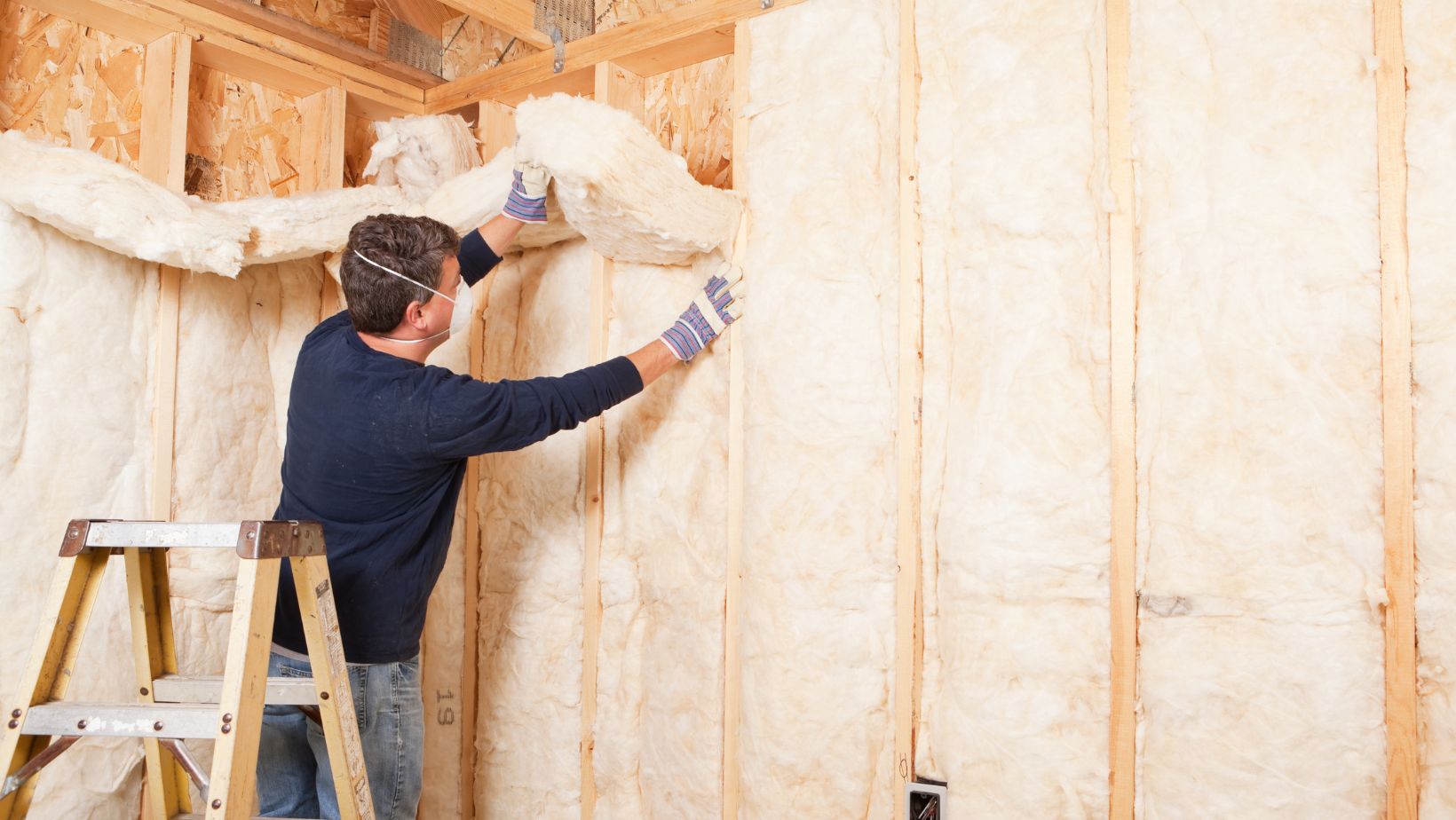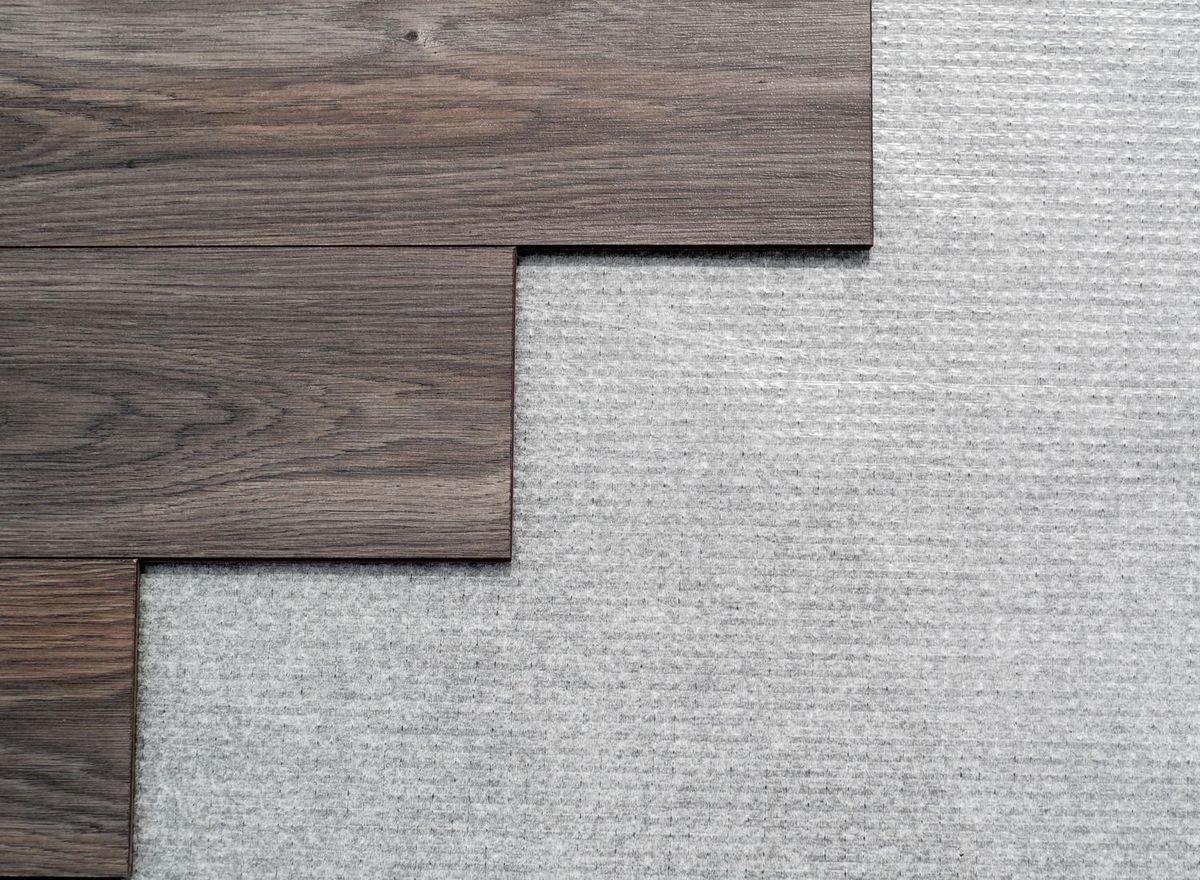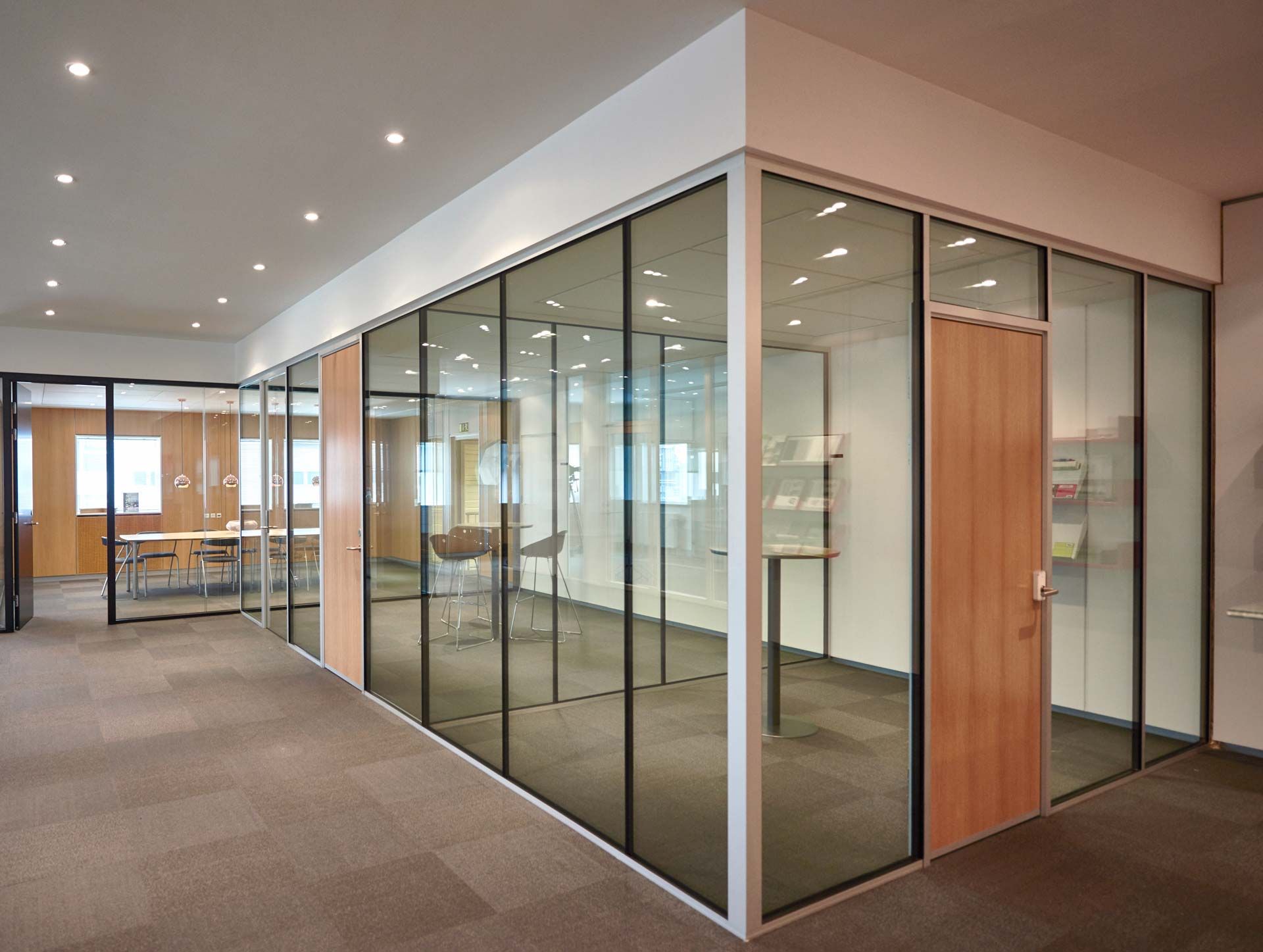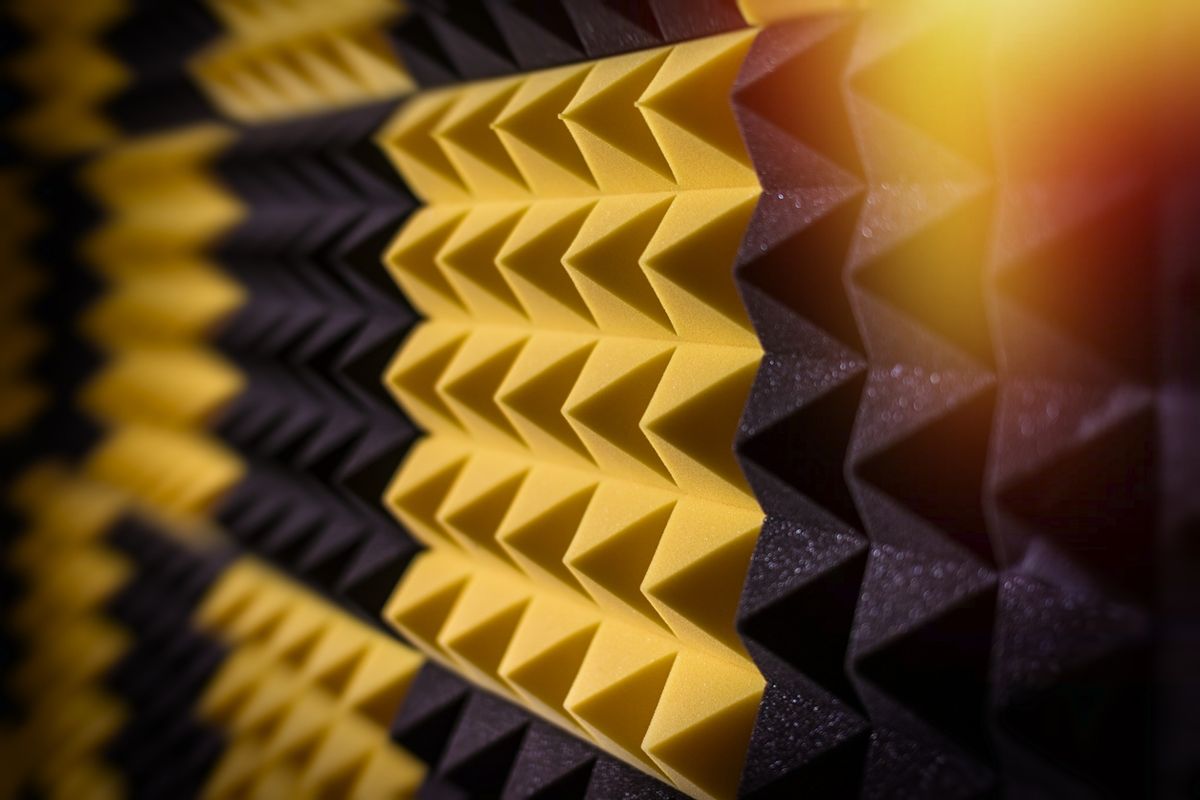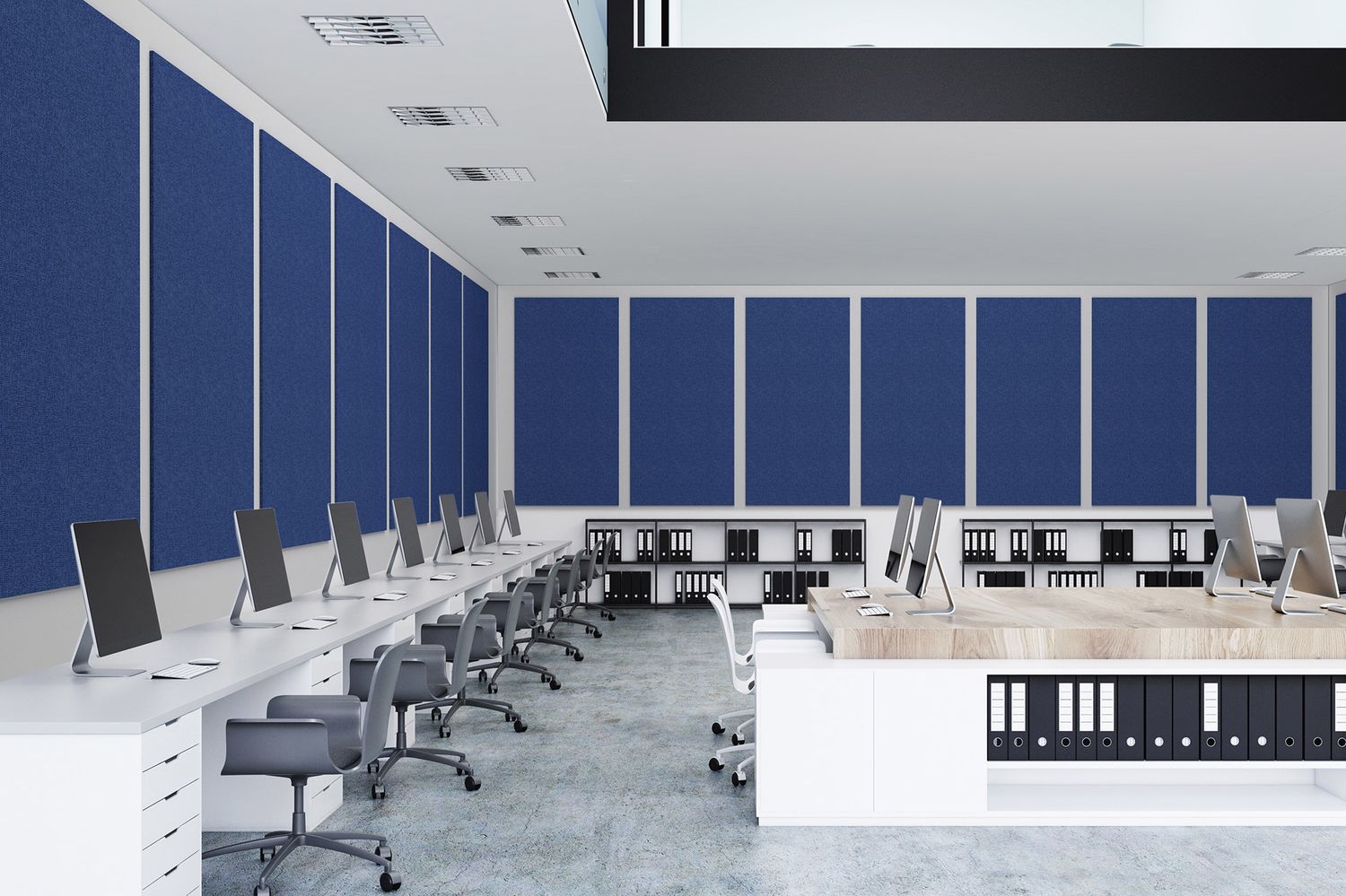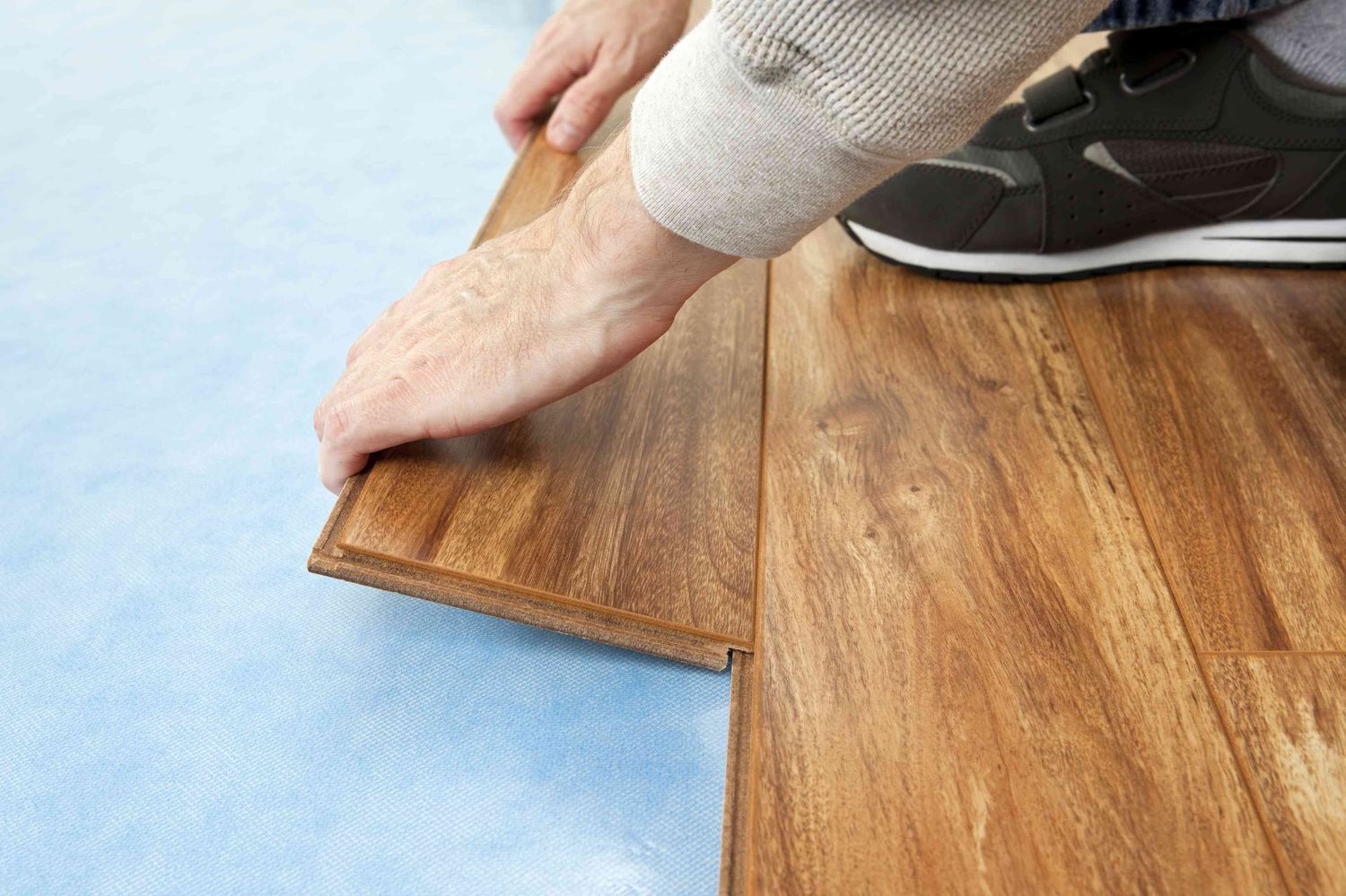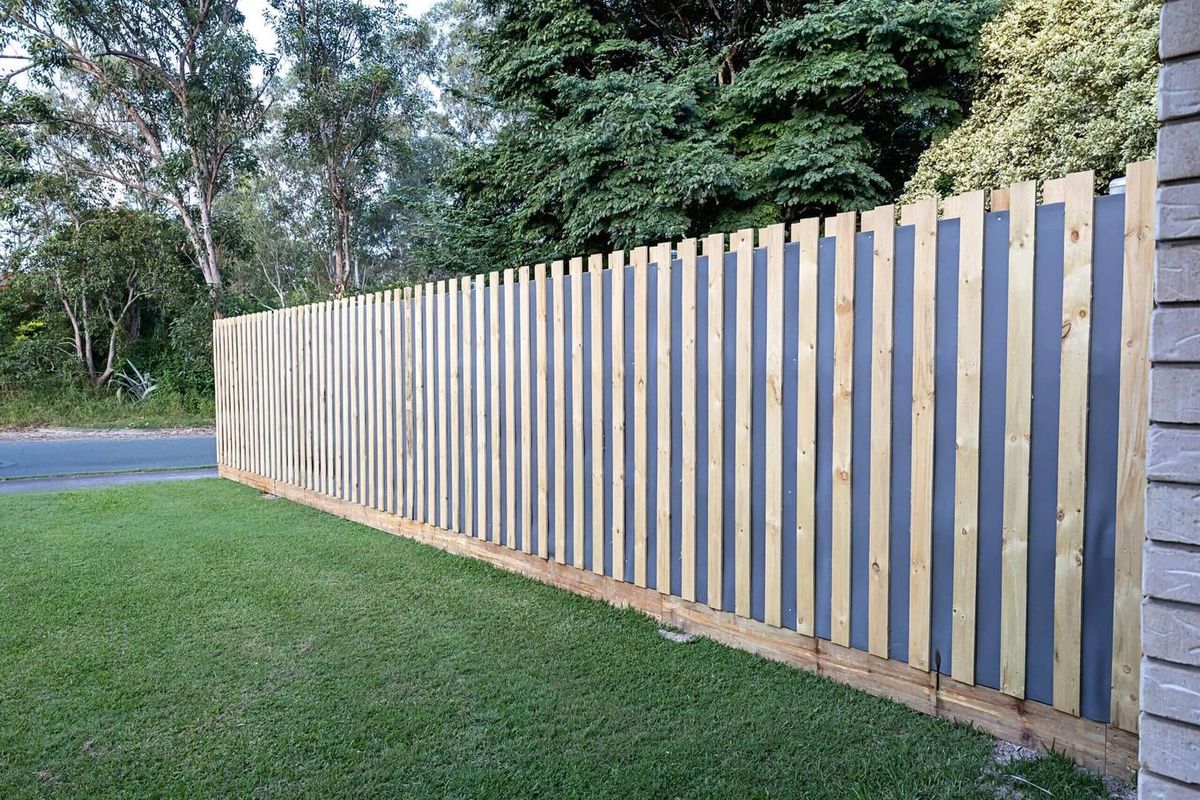Home>Production & Technology>Soundproofing>What Is The Cheapest Soundproofing Material
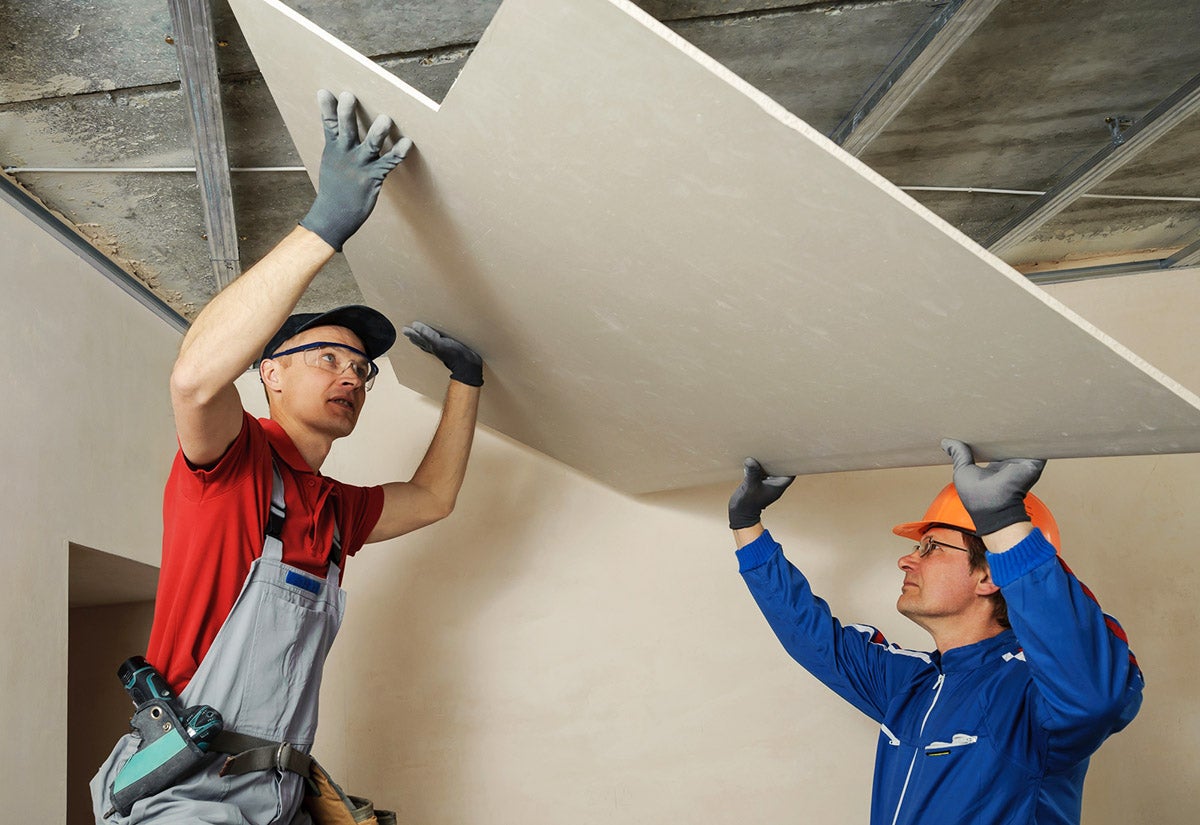

Soundproofing
What Is The Cheapest Soundproofing Material
Published: January 27, 2024
Looking for the cheapest soundproofing material? Discover effective and affordable options to block out unwanted noise with our soundproofing solutions.
(Many of the links in this article redirect to a specific reviewed product. Your purchase of these products through affiliate links helps to generate commission for AudioLover.com, at no extra cost. Learn more)
Table of Contents
- Introduction
- Reasons for Soundproofing
- Factors to Consider When Choosing Soundproofing Material
- Cost-effectiveness as a Deciding Factor
- Comparison of Different Soundproofing Materials
- Fiberglass Insulation
- Acoustic Foam Panels
- Mass Loaded Vinyl (MLV)
- Soundproof Curtains
- Recycled Denim Insulation
- Egg Crate Foam
- Soundproof Wallpaper
- Cork Tiles
- Conclusion
Introduction
Soundproofing is the process of reducing or eliminating unwanted noise, creating a peaceful and quiet environment. Whether you live in a noisy urban area, work in a bustling office, or have a music studio in your home, soundproofing can greatly enhance your quality of life by reducing noise pollution.
There are numerous reasons why people choose to soundproof their spaces. Perhaps you want to create a peaceful oasis in your home, free from the sounds of traffic or noisy neighbors. Maybe you’re a musician or podcaster looking to prevent sound leakage and ensure high-quality recordings. Or it could be that you’re a business owner wanting to improve productivity by minimizing distractions in the workplace.
When it comes to soundproofing, there are various factors to consider: effectiveness, ease of installation, durability, and of course, cost. While there are many soundproofing materials available on the market, not all of them are budget-friendly. However, it is indeed possible to find affordable options that provide excellent noise reduction.
In this article, we will explore the cheapest soundproofing materials available, their pros and cons, and the optimal situations where they can be used effectively. By understanding the different options, you can make an informed decision based on your specific needs and budget constraints.
Reasons for Soundproofing
There are several compelling reasons why individuals and businesses choose to invest in soundproofing materials. Let’s delve into some of the most common reasons why soundproofing is a worthwhile endeavor:
- Noise Reduction: The primary purpose of soundproofing is to reduce unwanted noise. Whether it’s heavy traffic, construction work, loud music, or neighbors’ conversations, excessive noise can be disturbing and affect your peace of mind. Soundproofing helps to create a quieter and more serene environment by blocking or absorbing sound waves.
- Privacy: Soundproofing is essential for maintaining privacy, especially in shared living spaces or office settings. It prevents conversations and other sounds from being overheard by others, ensuring confidentiality and a sense of personal space.
- Improving Sleep Quality: A peaceful and quiet sleep environment is crucial for getting a good night’s rest. Soundproofing materials can help minimize external noises such as traffic, loud neighbors, or barking dogs, creating a sleep-friendly atmosphere that promotes better sleep quality.
- Enhanced Productivity: In office settings, excessive noise can be a major distraction, affecting employees’ concentration and productivity. By soundproofing workspaces, businesses can create a more focused and efficient work environment, leading to improved performance and morale.
- Creating Home Theaters or Recording Studios: If you’re a movie enthusiast or a musician, soundproofing is vital for creating the perfect entertainment or recording space. It helps to prevent sound leakage, ensuring high-quality audio experiences without disturbing others in the household or nearby.
- Neighborly Consideration: If you live in an apartment or share walls with neighbors, soundproofing can be a way to be considerate of others. It helps to reduce the transmission of noise between units, minimizing disturbances and creating a harmonious living environment.
- Reducing Stress: Excessive noise can contribute to stress levels and impact overall well-being. By implementing soundproofing measures, you can create a more peaceful and serene living or working space, promoting relaxation and reducing stress.
Whatever your specific reasons may be, soundproofing can greatly improve the quality of your space, providing a quieter and more comfortable environment that aligns with your needs and preferences.
Factors to Consider When Choosing Soundproofing Material
When selecting soundproofing materials, it’s important to consider several factors to ensure that you choose the right option for your specific needs. Here are some key factors to keep in mind:
- Noise Reduction Ability: The primary goal of soundproofing is to reduce noise. Therefore, it’s crucial to choose a material that has excellent noise reduction capabilities. Look for materials with high Sound Transmission Class (STC) or Noise Reduction Coefficient (NRC) ratings, as these indicate how well the material can block or absorb sound waves.
- Application: Consider where and how you plan to use the soundproofing material. Is it for a bedroom, home theater, office, or industrial space? Different areas may require different soundproofing solutions. For example, acoustic panels or foam may be suitable for a home recording studio, while mass loaded vinyl (MLV) or soundproof curtains may be more appropriate for a residential space.
- Installation: Consider the complexity and ease of installation of the soundproofing material. Some materials, such as acoustic foam panels or soundproof curtains, can be easily installed with adhesive or hooks. On the other hand, materials like MLV may require professional installation. Choose a material that aligns with your DIY capabilities and time constraints.
- Durability: Soundproofing materials should be durable and able to withstand wear and tear over time. Consider the longevity and resilience of the material, especially if it will be exposed to moisture, temperature fluctuations, or physical impact. Opt for materials that are resistant to mold, mildew, and other environmental factors to ensure a long-lasting solution.
- Aesthetics: While the primary function of soundproofing materials is to reduce noise, it’s also important to consider their visual impact. If you’re soundproofing a living space, office, or studio, choose materials that blend well with the existing decor or offer customization options. Soundproofing materials can come in various colors, patterns, and finishes to match your aesthetic preferences.
- Budget: Cost is a significant factor to consider when choosing soundproofing materials. Determine your budget and research affordable options that still meet your noise reduction requirements. Keep in mind that the cheapest material may not always provide the best soundproofing performance, so find a balance between cost-effectiveness and effectiveness.
By carefully considering these factors, you can make an informed decision and select the right soundproofing material that fits your specific needs, budget, and installation requirements.
Cost-effectiveness as a Deciding Factor
When it comes to soundproofing materials, cost-effectiveness is often a significant deciding factor for many individuals and businesses. While creating a peaceful and quiet environment is important, it’s equally important to choose a solution that fits within the allocated budget. Let’s explore how cost-effectiveness can guide your decision-making process:
Upfront Cost: The initial cost of soundproofing materials can vary significantly depending on the type, brand, and quality. It’s essential to consider your budget and determine how much you’re willing to invest upfront. Keep in mind that the cheapest options may not always provide the best long-term value, as they could lack durability, effectiveness, or require frequent replacements.
Longevity: Consider the lifespan of the soundproofing material and its durability over time. While some materials may have a higher upfront cost, they could offer substantial long-term savings by lasting longer and requiring fewer replacements. Assess the warranty or expected lifespan of the material to determine its overall cost-effectiveness.
Noise Reduction Performance: Evaluate the noise reduction capabilities of the soundproofing material in relation to its cost. Compare the Noise Reduction Coefficient (NRC) or Sound Transmission Class (STC) ratings of different materials to gauge their effectiveness. Opting for a material with better noise reduction performance may require a slightly higher upfront investment, but it can significantly improve the overall value and satisfaction of the soundproofing solution.
D.I.Y. vs. Professional Installation: Take into consideration the cost implications of installation. Some soundproofing materials can be easily installed as a do-it-yourself (DIY) project, saving on labor costs. However, others may require professional installation, which can add to the overall cost. Consider your DIY skills and budget accordingly.
Energy Efficiency: Soundproofing materials that also offer thermal insulation properties can provide additional cost savings in terms of energy efficiency. They can help regulate temperature, reducing the need for excessive heating or cooling. This can lead to lower energy bills and increased cost-effectiveness in the long run.
Customization and Aesthetics: While aesthetics may not be the primary concern, it’s worth considering the visual impact of the soundproofing material. Some materials offer customization options, such as different colors, patterns, or finishes, allowing you to integrate them seamlessly into your space. This can enhance the overall value and satisfaction with your investment.
Balancing cost-effectiveness with performance is key when choosing soundproofing materials. It’s essential to evaluate the long-term benefits, durability, noise reduction capabilities, and installation requirements to make an informed decision that fits within your budget while still providing effective soundproofing solutions.
Comparison of Different Soundproofing Materials
When it comes to soundproofing materials, there are several options available, each with its own unique properties and advantages. Let’s compare some of the most popular soundproofing materials:
- Fiberglass Insulation: Fiberglass insulation is an affordable and commonly used soundproofing material. It is easy to install and offers decent noise reduction capabilities. However, it is primarily designed for thermal insulation and may not provide the highest level of soundproofing performance.
- Acoustic Foam Panels: Acoustic foam panels are lightweight and versatile soundproofing solutions. They are designed to absorb sound waves and reduce echoes and reverberation. Acoustic foam panels are often used in studios, home theaters, and offices. They are cost-effective and easy to install, making them popular among DIY enthusiasts.
- Mass Loaded Vinyl (MLV): MLV is a heavy and dense soundproofing material that offers excellent noise reduction properties. It is commonly used for walls, ceilings, and floors. MLV is highly effective at blocking sound transmission, but it can be more costly and may require professional installation due to its weight and thickness.
- Soundproof Curtains: Soundproof curtains are versatile and convenient solutions for reducing noise. They are typically made with multiple layers of dense fabric and soundproofing materials. Soundproof curtains are easy to install, offering effective sound absorption and blocking. However, their performance may not be as high as more specialized materials.
- Recycled Denim Insulation: Made from recycled denim material, this eco-friendly soundproofing option offers good thermal insulation and moderate noise reduction capabilities. Recycled denim insulation is easy to work with and install, although it may not provide the highest level of soundproofing performance for intense noise sources.
- Egg Crate Foam: Egg crate foam is a cost-effective option for soundproofing. The unique shape of the foam helps to absorb and diffuse sound waves, reducing echoes and reverberation. However, it may not offer the same level of noise reduction as other materials, especially for low-frequency sounds.
- Soundproof Wallpaper: Soundproof wallpaper contains a layer of sound-absorbing material, providing both noise reduction and aesthetic benefits. It is easy to install and can be used in conjunction with other soundproofing materials for added effectiveness. However, its noise reduction capabilities may not be as high as more specialized solutions.
- Cork Tiles: Cork tiles are a natural and sustainable soundproofing option. They provide good noise absorption properties and can be easily installed on walls and floors. Cork tiles offer thermal insulation benefits and can add a unique texture and aesthetic to a space.
Ultimately, the choice of soundproofing material depends on the specific noise reduction needs, budget, installation requirements, and aesthetic preferences. It’s important to consider the pros and cons of each material to select the most suitable option for your unique circumstances.
Fiberglass Insulation
Fiberglass insulation is a popular and cost-effective soundproofing material widely used in residential and commercial spaces. It is primarily designed for thermal insulation but also provides some level of soundproofing capabilities.
One of the key advantages of fiberglass insulation is its affordability. It is readily available at most hardware stores and can be an economical option for those on a tight budget. Fiberglass insulation comes in flexible batts or rolls, making it easy to install between wall studs, ceilings, or in other areas where soundproofing is desired.
When it comes to noise reduction, fiberglass insulation can help absorb and dampen sound waves to a certain extent. It can effectively reduce airborne noise, such as voices or television noise, and provide some level of privacy. However, it may not be as effective in blocking low-frequency sounds like footsteps or bass music.
While fiberglass insulation can provide decent soundproofing benefits for everyday noise sources, it is important to note that it is primarily designed for thermal insulation. Therefore, its soundproofing performance may not be as high as specialized soundproofing materials.
Another factor to consider is that fiberglass insulation may require additional measures to optimize its soundproofing capabilities. This can include using soundproofing sealants to seal any gaps or cracks around the insulation to prevent air and sound leakage.
It is worth noting that fiberglass insulation can become a health concern if not handled properly. The tiny glass fibers in the insulation can irritate the skin, eyes, and lungs. Therefore, it is crucial to take appropriate safety precautions, such as wearing protective clothing, gloves, and a mask, when working with fiberglass insulation.
In summary, fiberglass insulation is a cost-effective soundproofing option that provides moderate noise reduction benefits. It is easy to install and widely available, making it a popular choice for DIY projects. While it may not offer the highest level of soundproofing performance, it can be a suitable solution for reducing everyday noise in residential or commercial spaces.
Acoustic Foam Panels
Acoustic foam panels are a versatile and effective soundproofing material commonly used in recording studios, home theaters, offices, and other spaces where controlling sound reflections and echoes is crucial.
One of the key advantages of acoustic foam panels is their ability to absorb sound waves. The foam material is designed with a pattern of pyramid or wedge-shaped ridges that help scatter and deflect sound waves, reducing echoes and reverberation in a room.
Acoustic foam panels are relatively lightweight and easy to install, making them a popular choice for DIY enthusiasts. They can be attached to walls or ceilings using adhesive or mounting tools like Velcro or clips. The flexibility of the foam panels allows for customization and creative arrangements to optimize sound control in a space.
One of the main benefits of using acoustic foam panels is their excellent noise absorption capabilities. They effectively reduce echoes and improve sound clarity, making them an ideal choice for rooms where clear audio recordings or listening experiences are desired.
It’s important to note that while acoustic foam panels are excellent at absorbing high and mid-frequency sounds, they may not provide as much reduction in low-frequency sounds like footsteps or bass. For comprehensive soundproofing, it is advisable to combine acoustic foam panels with other materials or techniques that can address low-frequency sound transmission.
When selecting acoustic foam panels, it’s important to consider the thickness and density of the foam. Thicker and denser panels typically provide better noise absorption. Additionally, consider the dimensions of the room and the specific areas that require soundproofing to determine the quantity and size of panels needed.
While acoustic foam panels are an effective soundproofing solution, they also offer aesthetic benefits. They come in various colors and designs, allowing for customization and integration with the overall decor of the space.
In summary, acoustic foam panels are versatile soundproofing materials that excel in absorbing and reducing echoes and reverberations. They are easy to install, offer aesthetic customization options, and are particularly suited for spaces where audio clarity is essential, such as recording studios, home theaters, and offices.
Mass Loaded Vinyl (MLV)
Mass Loaded Vinyl (MLV) is a dense and flexible soundproofing material that offers exceptional noise reduction properties. It is widely used in both residential and commercial settings to block sound transmission and create quieter environments.
One of the primary advantages of MLV is its high density, which allows it to effectively block sound waves from passing through walls, floors, and ceilings. It is made from a combination of dense materials, such as vinyl or mineral fillers, that add mass and help absorb and dissipate sound energy.
MLV is often used as a barrier material, acting as a soundproof layer that can be installed in walls, ceilings, or floors. It is available in rolls or sheets that can be easily cut and manipulated to fit various spaces. MLV can be layered with other soundproofing materials or used alone, depending on the specific noise reduction requirements.
One of the key benefits of MLV is its versatility and effectiveness across a wide range of frequencies. It can effectively reduce both airborne sounds, such as voices or music, and impact noises, such as footsteps or vibrations. This makes it a suitable choice for spaces where comprehensive soundproofing is necessary.
Installing MLV can require some expertise and additional measures compared to other soundproofing materials. Due to its weight and thickness, MLV may require professional installation or extra reinforcement to ensure proper support and maximize its soundproofing capabilities.
While MLV provides excellent soundproofing performance, it is important to note that it is typically more expensive than other materials on the market. The higher cost can be attributed to its superior noise reduction capabilities and durability. However, the long-term benefits and effectiveness of MLV may outweigh the initial investment for those seeking optimal soundproofing results.
Additionally, MLV is known for its flexibility and ability to conform to irregular surfaces, making it a versatile choice for various applications. It is resistant to moisture, fire, and most chemicals, enhancing its durability and ensuring long-lasting soundproofing benefits.
In summary, Mass Loaded Vinyl (MLV) is a dense and effective soundproofing material that excels at blocking sound transmission. It offers versatility across a wide range of frequencies and can be used in various residential and commercial applications. While it may come at a higher cost, its superior noise reduction capabilities and durability make it a worthwhile investment for those seeking comprehensive soundproofing solutions.
Soundproof Curtains
Soundproof curtains, also known as acoustic curtains or noise-reducing curtains, are a convenient and effective solution for reducing noise pollution in residential and commercial spaces. These specially designed curtains are made with multiple layers of dense fabric and sound-absorbing materials to dampen noise and provide a more peaceful environment.
One of the main advantages of soundproof curtains is their ease of installation. They can be easily hung on standard curtain rods, making them a practical choice for those who want a quick and hassle-free soundproofing solution. They are particularly popular in bedrooms, living rooms, and home offices where external noise can be disruptive and affect daily activities.
Soundproof curtains work by absorbing and blocking sound waves. The multiple layers of thick and heavy fabric, often combined with sound-absorbing materials like fiberglass or foam, help to absorb and dampen noise, reducing echoes and reverberations in the room. However, it is important to note that soundproof curtains may not completely eliminate all noise, especially low-frequency sounds like heavy machinery or loud bass.
While soundproof curtains are effective at reducing noise, they also offer additional benefits. They can help regulate temperature by blocking drafts or heat transfer, providing some insulation benefits and potentially lowering energy costs. Soundproof curtains also provide privacy by preventing outsiders from hearing conversations or activities inside the room.
When choosing soundproof curtains, consider the thickness and density of the fabric. Thicker and heavier curtains tend to provide better noise reduction. It’s also worth noting that the width and length of the curtains should match the dimensions of the window or space for optimal soundproofing performance.
It’s important to manage expectations when using soundproof curtains. While they can significantly reduce noise, especially high and mid-frequency sounds, they might not provide the same level of soundproofing as more specialized materials or construction methods. Therefore, soundproof curtains are most effective in spaces where moderate noise reduction is required, rather than in areas with extremely loud or continuous noise sources.
In summary, soundproof curtains offer a practical and convenient solution for reducing noise in residential and commercial spaces. They are easy to install, provide additional benefits such as privacy and temperature regulation, and can be an effective option for moderate noise reduction. However, for comprehensive soundproofing, soundproof curtains can be complemented with other materials or techniques.
Recycled Denim Insulation
Recycled denim insulation is an eco-friendly and sustainable soundproofing material that provides both thermal insulation and moderate noise reduction capabilities. It is made from recycled denim or cotton fibers, making it a desirable alternative to traditional insulation materials.
One of the key advantages of recycled denim insulation is its environmental sustainability. By utilizing post-consumer denim scraps or clothing, it reduces waste and promotes recycling. This eco-friendly approach appeals to those looking for soundproofing options that align with their green initiatives.
In addition to its environmental benefits, recycled denim insulation also offers thermal insulation properties. It helps to regulate temperature by preventing heat transfer, reducing energy costs in both cold and hot climates. This dual functionality of thermal insulation and soundproofing makes it a versatile choice for residential and commercial spaces.
While recycled denim insulation provides moderate noise reduction capabilities, it may not match the soundproofing performance of specialized soundproofing materials. It can help to absorb and dampen noise, reducing echoes and reverberation in a room. However, for blocking higher levels of noise or addressing low-frequency sounds, additional soundproofing measures may be required.
Installation of recycled denim insulation is relatively simple and similar to traditional insulation materials. It can be fitted into walls, ceilings, or floors using standard insulation techniques. It is important to ensure a proper fit and coverage to achieve optimal soundproofing and thermal insulation results.
When considering recycled denim insulation, it’s essential to take into account the thickness and density of the material. Thicker and denser insulation will generally provide better soundproofing and thermal insulation properties.
While recycled denim insulation offers sustainable soundproofing benefits, it may have a higher upfront cost compared to traditional insulation materials. However, the long-term energy savings, environmental impact, and the comfort of a quieter space can outweigh the initial investment.
In summary, recycled denim insulation provides an eco-friendly and sustainable soundproofing solution with additional thermal insulation benefits. It offers a moderate level of noise reduction and is easy to install. While it may have a higher upfront cost, its long-term energy savings and environmental appeal make it an attractive option for those seeking both soundproofing and insulation properties.
Egg Crate Foam
Egg crate foam is a popular and cost-effective soundproofing material known for its unique design and noise absorption capabilities. It is made from polyurethane foam and is characterized by its distinctive pattern of peaks and troughs, resembling the shape of an egg crate.
One of the main advantages of egg crate foam is its ability to absorb sound waves and reduce echoes and reverberation. The convoluted surface of the foam helps to scatter and diffuse sound, preventing it from bouncing back and causing unwanted echoes in a room. As a result, it enhances sound clarity and reduces overall noise levels.
Egg crate foam is commonly used in recording studios, home theaters, and music practice rooms to improve acoustics and create a more controlled sound environment. It is also frequently utilized in offices, classrooms, and other spaces where noise reduction and improved speech intelligibility are desired.
Another benefit of egg crate foam is its affordability and ease of installation. It is lightweight and can be easily cut into desired sizes or shapes to fit specific areas. Egg crate foam can be mounted on walls, ceilings, or placed on surfaces such as doors or panels using adhesive or double-sided tape.
However, it is important to note that while egg crate foam is effective at reducing higher frequency sounds, it may have limitations in blocking low-frequency noises. It may not provide the same level of noise reduction as other specialized materials, especially for bass-heavy sounds or vibrations.
Additionally, the convoluted surface of egg crate foam can accumulate dust and may require regular cleaning to maintain its effectiveness. It is also worth noting that over time, the foam’s ability to absorb sound may decrease, requiring replacement or supplementation with other soundproofing materials.
Egg crate foam also offers some thermal insulation properties. While it may not match the level of insulation provided by traditional insulation materials, it can help to reduce heat transfer to some extent.
In summary, egg crate foam is an affordable and effective soundproofing material that improves acoustics and reduces echoes and reverberations. It is easy to install and commonly used in recording studios, home theaters, and other spaces where noise reduction is desired. While it may not block low-frequency sounds as effectively as other materials, it remains a popular choice for its cost-effectiveness and noise absorption capabilities.
Soundproof Wallpaper
Soundproof wallpaper is a unique and innovative solution for reducing noise and enhancing sound insulation in residential and commercial spaces. This specialized wallpaper is designed with a layer of sound-absorbing material, providing both aesthetic appeal and practical soundproofing benefits.
One of the main advantages of soundproof wallpaper is its ease of installation. It can be applied to walls just like ordinary wallpaper, making it a convenient option for those looking for a simple and effective soundproofing solution. It is particularly popular in bedrooms, living rooms, and home offices where external noise can disturb relaxation or concentration.
Soundproof wallpaper works by incorporating a layer of sound-absorbing material, such as foam, in its design. This layer helps to absorb and dampen sound waves, reducing echoes and reverberations in the room. While it may not block all noise, especially low-frequency sounds, it can significantly improve sound quality and reduce overall noise levels.
In addition to its soundproofing capabilities, this type of wallpaper also offers other benefits. It can help to regulate temperature by reducing heat transfer through walls, potentially lowering energy costs. Soundproof wallpaper can also add an extra layer of insulation, reducing drafts and improving comfort in a space.
When choosing soundproof wallpaper, consider the thickness and density of the material. Thicker wallpapers generally provide better soundproofing performance. Additionally, select a design and pattern that complements your decor to ensure a seamless integration into your interior design.
While soundproof wallpaper offers effective noise reduction and visual appeal, it is important to note that it may have limitations in blocking large amounts of noise or extreme sound sources. For comprehensive soundproofing, it can be beneficial to combine soundproof wallpaper with other materials or techniques, such as acoustic panels or mass loaded vinyl (MLV).
Furthermore, it is crucial to properly prepare the wall surface and follow the manufacturer’s instructions for installation to maximize the effectiveness of soundproof wallpaper. Ensuring a clean and smooth wall surface will allow for proper adhesion and long-lasting performance.
In summary, soundproof wallpaper provides an innovative and convenient solution for reducing noise and enhancing sound insulation in various spaces. It is easy to install, adds aesthetic appeal, and improves the overall acoustic environment. While it may not block all noise, it can significantly enhance sound quality and reduce overall noise levels, making it a valuable addition to create a quieter and more comfortable space.
Cork Tiles
Cork tiles are a natural and versatile soundproofing material that offers both functional and aesthetic benefits. Made from the bark of the cork oak tree, these tiles provide excellent noise absorption properties and can be used in a variety of spaces to create a quieter environment.
One of the key advantages of cork tiles is their ability to absorb and dampen sound waves. The cellular structure of cork contains air pockets, which act as natural sound absorbers, reducing echoes and reverberations in a room. This makes cork tiles an effective solution for spaces where noise reduction and acoustic control are desired.
Cork tiles are commonly used in residential, commercial, and educational spaces. They are particularly suitable for areas such as music studios, home theaters, classrooms, and offices where speech intelligibility and acoustic quality are essential.
In addition to their soundproofing properties, cork tiles offer other advantages. They are naturally insulating, helping to regulate temperature and reduce heat transfer. This can result in energy savings and increased comfort in the space. Cork is also a sustainable and renewable material, making it an environmentally friendly choice.
Installation of cork tiles is relatively straightforward. They can be glued or nailed to walls or applied as a floating floor system, depending on the specific application. Cork tiles are available in various thicknesses and shapes, allowing for customization based on the noise reduction requirements of the space.
With their unique texture and appearance, cork tiles can add a natural and warm aesthetic to any room. They are available in different colors and patterns, offering design flexibility to match existing decor or create a unique visual statement.
While cork tiles provide effective soundproofing, it’s important to note that they may not completely block all noise, especially low-frequency sounds or extreme noise sources. For comprehensive soundproofing, it may be necessary to combine cork tiles with other materials or techniques such as mass loaded vinyl (MLV) or acoustic panels.
It’s also worth considering that cork tiles require regular maintenance to preserve their soundproofing properties and overall durability. They should be periodically cleaned and sealed with a protective finish to prevent damage from moisture or stains.
In summary, cork tiles offer a natural and versatile soundproofing solution. They provide excellent noise absorption, thermal insulation, and an attractive aesthetic. While they may not completely block all noise, cork tiles are a sustainable and visually appealing option for creating a quieter and more comfortable space.
Conclusion
Soundproofing is a valuable investment for creating a peaceful and quiet environment in various settings. Whether you’re looking to reduce noise in your home, office, or commercial space, there are a variety of soundproofing materials available to meet your specific needs and budget.
In this article, we have explored several soundproofing materials, each with its own unique properties and advantages. Fiberglass insulation provides affordable insulation and moderate noise reduction, while acoustic foam panels offer effective sound absorption and are easy to install. Mass Loaded Vinyl (MLV) excels in blocking sound transmission, while soundproof curtains provide a convenient and customizable solution to reduce noise and enhance privacy.
For those seeking eco-friendly options, recycled denim insulation offers a sustainable choice that combines thermal and noise insulation. Egg crate foam provides cost-effective sound absorption but may have limitations in blocking low-frequency sounds.
Soundproof wallpaper offers both functionality and aesthetics, improving acoustics while adding a decorative element to the room. Lastly, cork tiles provide excellent noise absorption and thermal insulation with a natural and warm aesthetic appeal.
When selecting a soundproofing material, it is important to consider factors such as noise reduction capabilities, application suitability, installation ease, durability, aesthetics, and your budget. Keep in mind that the cheapest option may not always provide the best long-term performance, so strive to find a balance between cost-effectiveness and effectiveness.
Ultimately, the right soundproofing material for you will depend on your specific requirements and preferences. By understanding the features and benefits of different soundproofing materials, you can make an informed decision to create a quieter and more peaceful environment that enhances your quality of life or improves work productivity.
Remember, soundproofing is not a one-size-fits-all solution. It may be necessary to combine multiple materials or techniques to achieve comprehensive noise reduction, especially for spaces with high sound requirements or specific noise sources.
Investing in soundproofing can greatly improve your comfort, productivity, and overall well-being. Choose the appropriate soundproofing materials and enjoy the benefits of a quieter and more enjoyable living or working space.

